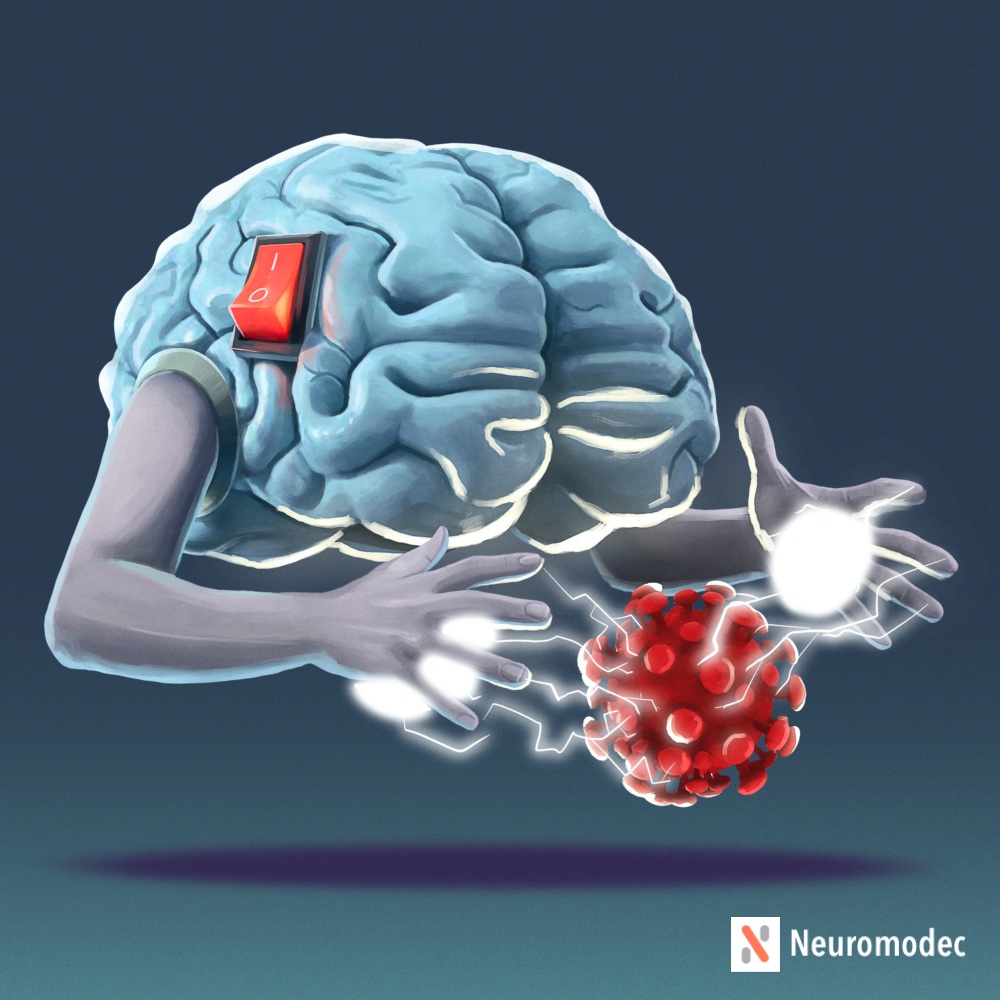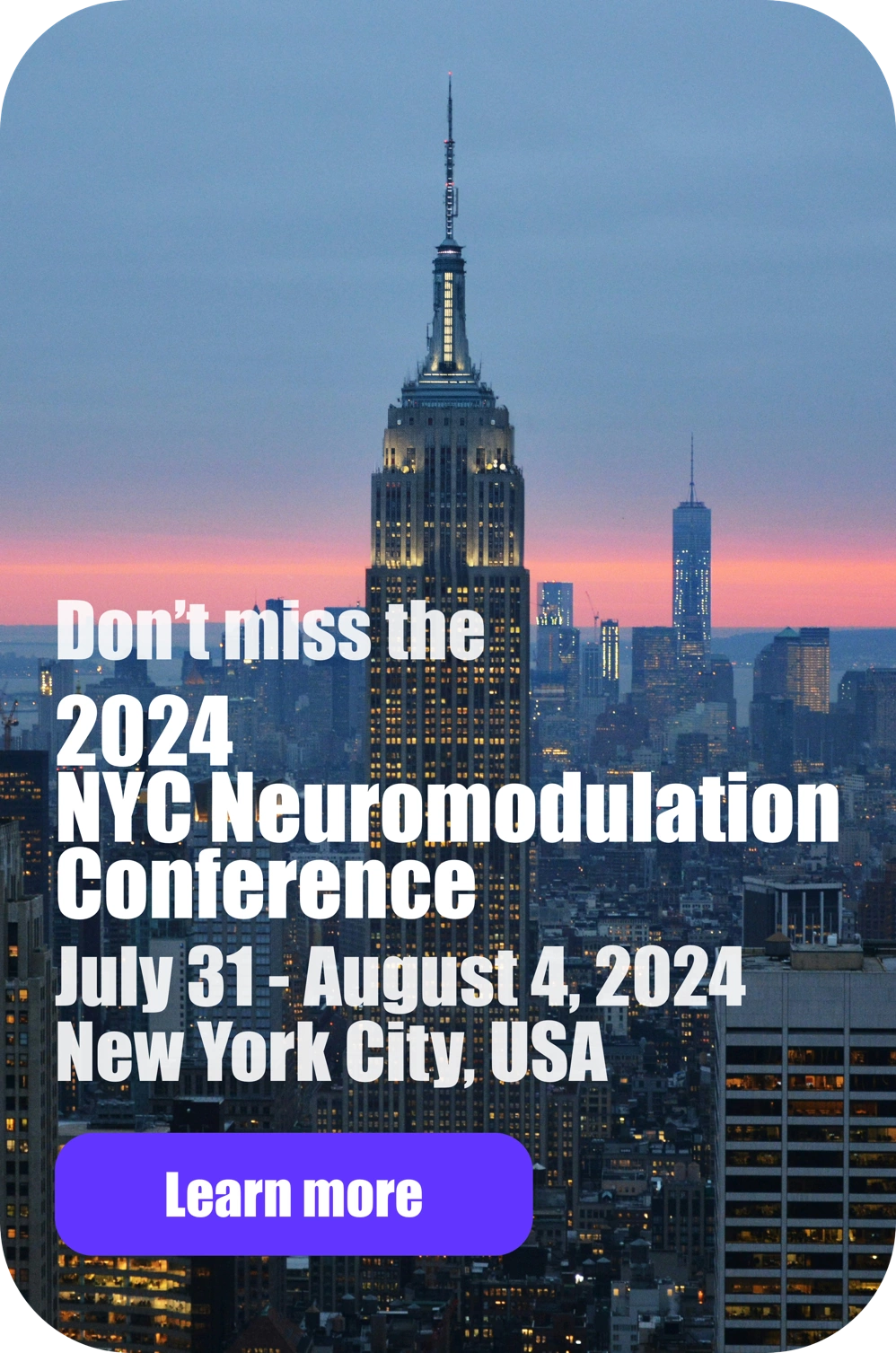
1. Restoring sense of smell to COVID-19 patients using cochlear implants
The April 12, 2023 Nature Career Podcast interviews Dr. Thomas Hummel of the Technical University of Dresden in Germany on his research to treat smell and taste disorders. Hummel described the development of cochlear implants to help recover lost hearing and suggests: “There could be similar implants inside the nasal cavity connected to the olfactory bulb, eliciting a pattern that might make sense to the brain,” he says. The project is funded by the European Union and in early stages.
2. The National Institutes of Health (NIH) issues a report on how symptoms of Long-COVID differ among racial and ethnic groups
According to the NIH the change of being diagnosed with Long-COVID seems to vary with racial and ethnic groups (read the report). A study supported by the NIH’s broad COVID research program (called Researching COVID to Enhance Recovery; RECOVER) reported that most patients from a sample of more than 30,000 patients with a Long-COVID diagnosis were White, non-Hispanic, female, and likely to live in more affluent areas with greater access to health care. The NIH articles suggest because the COVID-19 pandemic has disproportionately affected people from racial and ethnic minorities, this finding may mean that people from those groups are living with Long-COVID without a formal diagnosis. In a second study, also supported by RECOVER, researchers reported that people from certain racial and ethnic groups are more likely to experience certain symptoms linked to Long-COVID. And the NIH suggested this variation in symptoms may help explain why people from those groups are being underdiagnosed with Long-COVID.
We note, a disproportion, if not almost the entirety, of the NIH’s Long-Covid RECOVER funds are being used to characterize (observe) Long-COVID, rather than develop treatments for it. Many researchers, clinicians, and patient advocates are increasingly calling for more resources to test interventions. Neuromodulation technologies showing promise as Long-COVID treatments warrant more research.
Observational studies referenced:
Khullar, D., Zhang, Y., Zang, C., Xu, Z., Wang, F., Weiner, M. G., Carton, T. W., Rothman, R. L., Block, J. P., & Kaushal, R. (2023). Racial/ethnic disparities in post-acute sequelae of SARS-CoV-2 infection in New York: an EHR-based cohort study from the RECOVER program. Journal of General Internal Medicine, 1–10. Advance online publication. https://doi.org/10.1007/s11606-022-07997-1
Pfaff, E. R., Madlock-Brown, C., Baratta, J. M., Bhatia, A., Davis, H., Girvin, A., Hill, E., Kelly, E., Kostka, K., Loomba, J., McMurry, J. A., Wong, R., Bennett, T. D., Moffitt, R., Chute, C. G., Haendal, M., The N3C Consortium, & The RECOVER Consortium. (2023). Coding long COVID: Characterizing a new disease through an ICD-10 lens. BMC Medicine, 21(58). https://doi.org/10.1186/s12916-023-02737-6
3. Full recording from the April 25, 2023 FDA public meeting on Long-Covid is available
On April 25, 2023, FDA hosted a public meeting on Patient-Focused Drug Development for Long COVID. FDA was interested in obtaining patients perspectives on their experiences with Long COVID, including how Long COVID affects their daily life, the symptoms that matter most to them, their current approaches to treating Long COVID, and what they consider when determining whether or not to participate in a clinical trial. Watch the video here.
4. Frontiers Research Topic: Neuromodulation in COVID-19: from basic research to clinical applications
A new pre-print from researchers at Bangor Institute for Health and Medical Research, Bangor University (Wales, UK) and the Wales COVID-19 Evidence Centre notes:
The Frontiers journal has published a special research topic on “Neuromodulation in COVID-19: From basic research to clinical applications.” The following articles were included:
Linnhoff et al. review the potential of non-invasive brain stimulation technologies (NIBS) for the treatment of cognitive and physical fatigue, the most common and debilitating symptom of Long-Covid. Neuromodulation methods such as transcranial direct and alternating current stimulation (tDCS, tACS), as well as transcutaneous VNS (taVNS) were explained for ability to modulate fatigue-related maladaptive neuronal circuitry, an manage dysregulated immune system, frontoparietal hypometabolism, and reduced cerebral blood flow.
Tornero et al. report a prospective clinical study on the efficacy and safety of the non-invasive cervical VNS for the treatment of respiratory symptoms and over-inflammation in COVID-19. Patients were hospitalized for COVID-19 but without the need for mechanical ventilation. While anti-inflammatory effects (such as on C-reactive protein) of VNS were proven, and the intervention was safe, significant effects on the respiratory outcomes (e.g., oxygen saturation) were not observed following the VNS intervention.
Seitz et al. reported a prospective clinical on the effectiveness of the non-invasive auricular VNS for the treatment of inflammation in COVID-19. In contrast the Tornero et al. analysis only severe COVID-19 patients with the need for mechanical ventilation were included. Auricular VNS reduced pro-inflammatory markers (e.g., CRP) and also improved anti-inflammatory markers (such as interleukin 10 (IL-10)) with minimal side-effects. Authors suggested the auricular VNS as a encouraging option for additional treatment in severe COVID-19 patients, subject to further validation trials.
Czura et al. review neuromodulation strategies to reduce over-inflammation and avoid respiratory complications in COVID-19. The role of the nervous system (including vagus and sacral nerves) was discussed for inflammation and respiration, followed by mechanistic rationale in using transcutaneous cervical and auricular VNS, transcranial, and ultrasound stimulations in COVID-19-related disorders. Czura et al suggest neuromodulatory approaches could be used also in systemic disorders triggered by other pathogens. The authors formed the International Consortium on Neuromodulation for COVID-19, which developed recommendations in neuromodulation studies in COVID-19.
Citations:
Linnhoff S, Koehler L, Haghikia A and Zaehle T (2023) The therapeutic potential of non-invasive brain stimulation for the treatment of Long-COVID-related cognitive fatigue. Front. Immunol. 13:935614. doi: 10.3389/fimmu.2022.935614
Tornero C, Pastor E, Garzando MdM, Orduña J, Forner MJ, Bocigas I, Cedeño DL, Vallejo R, McClure CK, Czura CJ, Liebler EJ and Staats P (2022) Non-invasive Vagus Nerve Stimulation for COVID-19: Results From a Randomized Controlled Trial (SAVIOR I). Front. Neurol. 13:820864. doi: 10.3389/fneur.2022.820864
Seitz T, Szeles JC, Kitzberger R, Holbik J, Grieb A, Wolf H, Akyaman H, Lucny F, Tychera A, Neuhold S, Zoufaly A, Wenisch C and Kaniusas E (2022) Percutaneous Auricular Vagus Nerve Stimulation Reduces Inflammation in Critical Covid-19 Patients. Front. Physiol. 13:897257. doi: 10.3389/fphys.2022.897257
Czura CJ, Bikson M, Charvet L, Chen JDZ, Franke M, Fudim M, Grigsby E, Hamner S, Huston JM, Khodaparast N, Krames E, Simon BJ, Staats P and Vonck K (2022) Neuromodulation Strategies to Reduce Inflammation and Improve Lung Complications in COVID-19 Patients. Front. Neurol. 13:897124. doi: 10.3389/fneur.2022.897124
5. The brain mechanisms underlying long-COVID fatigue using Transcranial Magnetic Stimulation
In a study published in the Brain Communications Journal, scientist studied the neural mechanisms underlying post-coronavirus disease (COVID-10) fatigue using Transcranial Magnetic Stimulation (TMS). The authors report they may have objective tests for brain changes underlying Long-COVID-10 fatigue.
Citation:
Anne M E Baker, Natalie J Maffitt, Alessandro Del Vecchio, Katherine M McKeating, Mark R Baker, Stuart N Baker, Demetris S Soteropoulos, Neural dysregulation in post-COVID fatigue, Brain Communications, Volume 5, Issue 3, 2023, fcad122, https://doi.org/10.1093/braincomms/fcad122
6. New study: Prefrontal tDCS modulates autonomic responses in COVID-19 inpatients
In the prestigious journal Brain Stimulation. Pinto et al investigate the efficacy, safety, and feasibility of a single session of bihemispheric prefrontal transcranial Direct Current Stimulation (tDCS) on indicators of cardiac autonomic regulation and mood of COVID-19 inpatients. The authors report that bihemispheric prefrontal tDCS was safe and feasible in hospitalized patients with COVID-19, and produced a large effect on heart rate variability. The authors conclude: bihemispheric prefrontal tDCS seems promising to enhance clinical outcomes after severe infections.
Citation:
Pinto TP, Inácio JC, de Aguiar E, Ferreira AS, Sudo FK, Tovar-Moll F, Rodrigues EC. Prefrontal tDCS modulates autonomic responses in COVID-19 inpatients. Brain Stimul. 2023 Mar 20;16(2):657-666. doi: 10.1016/j.brs.2023.03.001. Epub ahead of print. PMID: 36940750; PMCID: PMC10027235.
7. Brief article on promise of non-invasive vagus nerve stimulation for Long-Covid
In EJONS journal, Ozden and Percin comment briefly on “A Promising Method For Post-COVID/Long-COVID Syndrome: Noninvasive Vagus Nerve Stimulation”. They conclude “The COVID-19 pandemic has had devastating health and socioeconomic impacts on people…some people who had the disease continued to experience symptoms such as fatigue, brain fog, and tachycardia that impair their quality of life…Noninvasive VNS may be an additional treatment option to control symptoms seen in Post-COVID/Long-COVID. “ Year 7(2023) Vol:1 Issued in March, 2023www.ejons.co.ukEJONS International Journal on Mathematic, Engineering and Natural Sciences ISSN 2602 -413620The applications so far in different indications show that noninvasive VNS is an effective and safe treatment method.
Citation
Özden, A. V., & Perçin, A. (2023). A Promising Method For Post-COVID/Long-COVID Syndrome: Noninvasive Vagus Nerve Stimulation: Noninvasive Vagus Nerve Stimulation For Covid-19. EJONS INTERNATIONAL JOURNAL, 7(1), 16–23.
8. More studies on auricular vagus nerve stimulation for anti-inflammatory effects in severe COVID-19 cases
Vienna University of Technology scientists working with Hospital Favoriten, the Medical University of Vienna, the Health Service Centre of the Vienna Private Clinic, the Immunological Day Clinic Vienna, the Sigmund Freud Private University Vienna, continue to test if closed-loop taVNS aids in the healing process in severe COVID-19 cases. The team explains “In the study, we were able to show that predictive stimulation works and leads to the desired result. This was possible due to a feedback function of the system, via which the aVNS system can constructively interfere with the parasympathetic system.”
Citations
“Auricular vagus nerve stimulator for closed-loop biofeedback-based operation” by Babak Dabiri, Klaus Zeiner, Arnaud Nativel and Eugenijus Kaniusas, 10 May 2022, Analog Integrated Circuits and Signal Processing. DOI: 10.1007/s10470-022-02037-8
“Non-invasive Auricular Vagus Nerve Stimulation as a Potential Treatment for Covid19-Originated Acute Respiratory Distress Syndrome” by Eugenijus Kaniusas, Jozsef C. Szeles, Stefan Kampusch, Nuria Alfageme-Lopez, Daniela Yucuma-Conde, Xie Li, Julio Mayol, Christoph Neumayer, Michele Papa and Fivos Panetsos, 28 July 2020, Frontiers in Physiology. DOI: 10.3389/fphys.2020.00890
9. Study indicates home-based electrical stimulation device improved muscle perfusion lost by Long-Covid
In the journal Physiological Reports, researchers at Baylor College of Medicine report that the use of a home-based electrical stimulation device improved muscle perfusion, the rate at which oxygen is delivered to muscles, and endurance in patients who were hospitalized due to COVID-19 infection and experienced persistent atrophy, weakness, pain or fatigue in the lower extremities. The device used is a mico-current TENS device.
Citation
Zulbaran-Rojas, A., Lee, M., Bara, R. O., Flores-Camargo, A., Spitz, G., Finco, M. G., Bagheri, A. B., Modi, D., Shaib, F., & Najafi, B. (2023). Electrical stimulation to regain lower extremity muscle perfusion and endurance in patients with post-acute sequelae of SARS CoV-2: A randomized controlled trial. Physiological Reports, 11, e15636. https://doi.org/10.14814/phy2.15636
10. European reclassification of non-invasive brain stimulation will impair research on COVID / Long-COVID
In December 2022 the EU reclassified rTMS and low intensity tES as Class III devices, the category of highest risk. Clinicians and scientists have protested this new rule as unjustified and restrictive of all research using non-invasive brain stimulation device. These restrictions will also apply to research in the EU on treatments for Long-Covid (PASC).
Latest Neuromodulation for covid updates
Subscribe to stay up to date about the latest in Neuromodulation



